With so many different fabric types available to the modern embroiderer, it can be hard to know which type of material is best to use with your embroidery designs and when to use them. Well thankfully, this article will help answer those questions and more!
When it comes to fabrics used in machine embroidery, there are 3 main categories based on how certain fabrics are produced:
- Nonwoven fabrics, such as felt
- Woven fabrics, such as cotton, linen, silk, wool, and polyester
- Knitted fabrics, such as yarn and French terry cloth
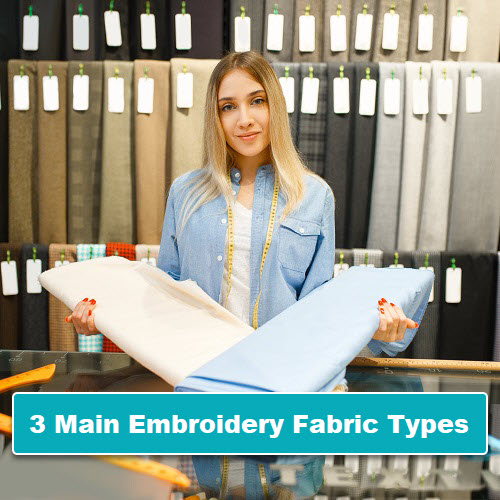
When the first home embroidery machines hit the market, it was fascinating. These machines had small embroidery field dimensions, and designs were either preprogrammed into the embroidery machine or design cards were placed into them. At this time, there were no designs you could buy online from the comfort of your own home; everything happened through a physical dealer. Times sure have changed.
Because not many people had a guide to machine embroidery stabilizers or knowledge of how to stitch out their designs properly, most of their embroidery designs were only embroidered onto felt. Felt was used as the fabric of choice because it was easy, and the overall stitching outcome turned out great.
Although stitching out your embroidery designs on felt to admire your work is fun, it is a lot more pleasurable to stitch out your embroidery designs for a purpose. But if you don’t know what fabrics to use for your embroidery, how will you create something both visually beautiful and functional? Thankfully, this embroidery fabric guide is here to help!
The 3 Main Categories Of Embroidery Fabric
The 3 main categories of fabric used in machine embroidery can be broken down in relation to how the fabrics are produced. These fabric categories include nonwoven made produced with a felting machine, woven produce with a weaving machine, and knitted fabrics produced with a knitting machine.
When an embroidery design is stitched onto each fabric category, the design will react differently due to the fabric’s creation process and fibers being different. The fibers that are used to make the fabric are natural, synthetic, or a combination.
Nonwoven fabrics with embroidery
Nonwoven fabrics include acrylic and wool, which make felt. Nonwoven fabrics have fibers that are layered and then bonded together. They can bond together mechanically, chemically or with heat.
After nonwoven fabrics are made, there will be no spaces between the fibers; this will make the fabric thicker and denser. Because of this, felt takes embroidery well, but with its properties, it has no drape and depending on the fiber used, it may pill.
Pilling happens when different lengths of fiber separate from each other, and then there is a little ball of fibers on top of the fabric. The uses for it in embroidery are limited, but it works very well when you do use it.
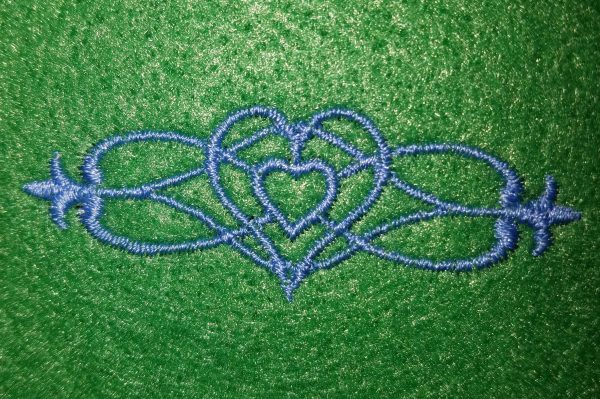
This is a sample of a design that was sewn on acrylic felt with no stabilizer. This same design, as shown in the images below, is used to compare how this design will also sew out on woven and knitted fabric. It was sewn in a 4X4 hoop and has 1514 stitches. The fabrics are all hooped with the same type of needle and thread. The design sewed out very well without stabilizer, but stabilizer would typically be used.
Woven fabrics with embroidery
Woven fabrics include cotton, flax (linen), silk, wool, rayon, and polyester. They are made with fibers that are spun into yarn and then woven into a fabric. When they are spun into yarn, they could have a loose twist or a tight twist, and that matters because if they are loosely twisted, they will have more movement, which could affect your embroidery. Fabric is woven together on a loom. The loom uses two sets of yarn to form a fabric. One set of yarn runs the fabric’s length and is under tension to keep it taut while weaving. Those yarns are called the warp. The loom’s action will raise some of the warp threads, which will make a shed, and the weft yarn will be passed through the shed and beaten down to make the fabric.
The way the yarns are woven will give different weaves. The most common weaves are the plain weave and the twill weave. A plain weave is where the weft yarn crosses over one yarn and under the next. This is the weave that we see the most; quilter’s cotton, linen, and silk dupioni use this weave. In a twill weave, the yarns cross over two yarns and under two yarns and then offset the next row to give the diagonal line in the fabric. This weave occurs in denim fabric.
Regarding a plain weave, the spaces between the yarn can depend on how close the yarns are placed together. The wider the spaces, the more the fabric will move when it is being embroidered. The twill weave is tighter and does not leave much space between the yarns, which means less movement.
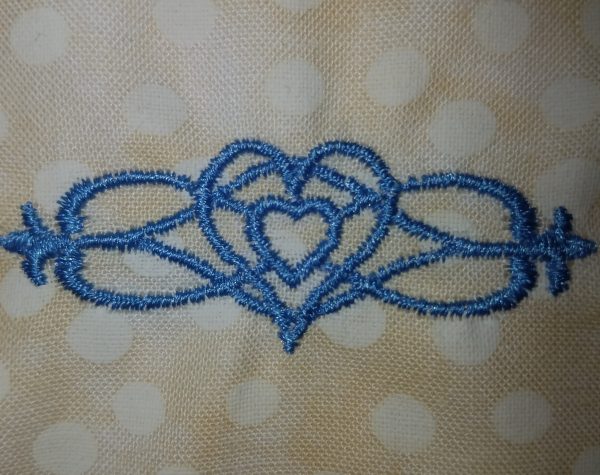
This sample has no stabilizer. It is a tightly woven quilter’s cotton, and you can see a little puckering around the middle of the design. The stitching is irregular because the fabric is not stable and is pulling.
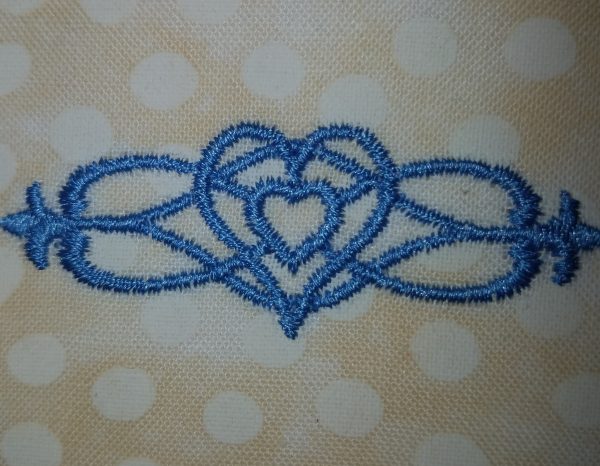
This sample was embroidered with a cutaway stabilizer. It didn’t pucker and stitched evenly. The stabilizer is nonwoven so that it can hold the stitches well. This is a well-digitized design, so there are no extra stitches.
Knitted fabric with embroidery
The knitted fabric seems to be the fabric that gives embroiderer’s the hardest time.
Knitted fabric is formed by interloping one yarn. It has a lot of stretch and can have large spaces between the loops. Some knits are tighter than others, but they all stretch. The movement of the knit is what needs to be controlled when embroidering.
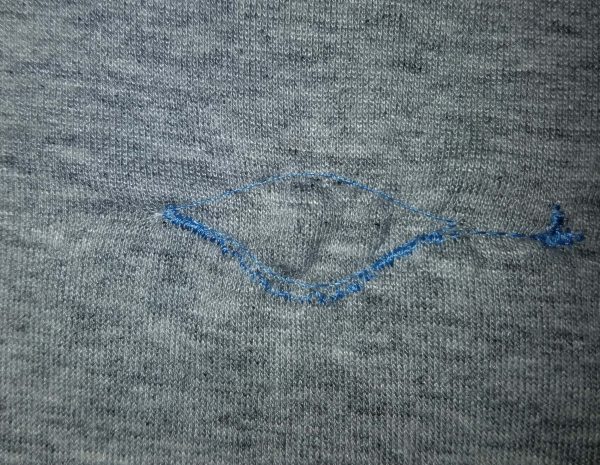
This is something you would never do, but it gives you an idea of how a knit fabric embroiders without stabilizer. This fabric is French terry cloth; as you can see, it is stretched a lot and has skipped stitches. I stopped the machine when the fabric was being pushed into the throat plate. This is a disaster waiting to happen. It was time to stop before the machine stopped for me. We know from the other sew outs that this is a great design and sews out well, so the problem is the fabric and because we didn’t add any stabilizer.
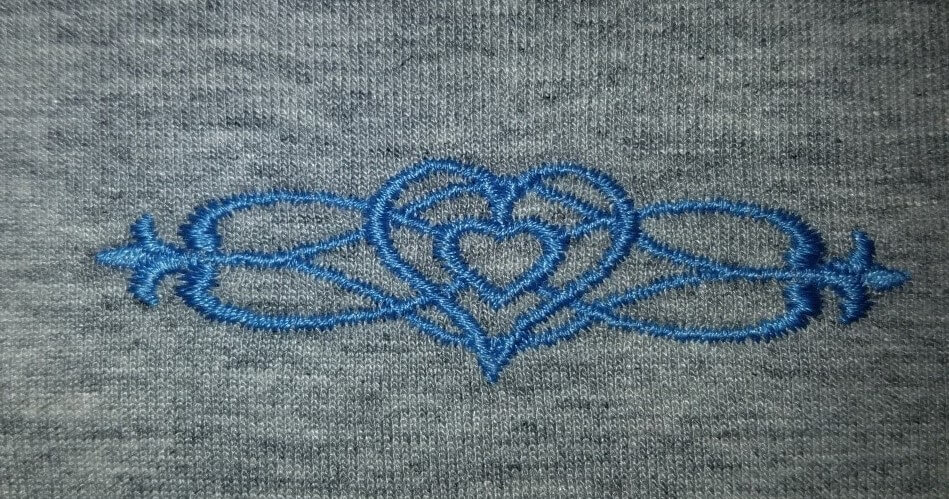
This is the same fabric after adding stabilizer. It is a great stitch out. A piece of cutaway stabilizer was used to stabilize the knitted fabric of this French terry cloth.
Have Extra Fabric Scraps? Try Applique!
A great way to utilize some of your small pieces of spare fabric is for applique embroidery designs
Since your base fabric will be treated and stabilized, the applique fabric should only need some spray starch.
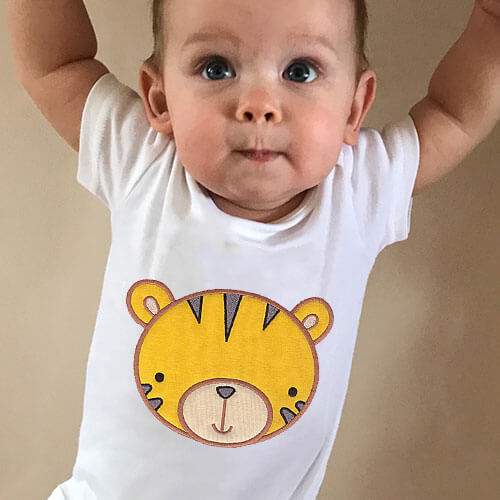
Here’s a gift for you! You can download the cute tiger applique design shown above for FREE by clicking here.
There are a lot of different fabrics used for applique designs. The most popular is even-weave cotton, it is easy to stabilize with spray starch, and after it is placed down on the placement stitch and tacked down, it is easy to trim.
Vinyl has become a popular nonwoven fabric for applique. It is best if it has a woven back on it, so it does not perforate with the satin stitch. Vinyl is not always the easiest to trim, so if you have a cutting machine, the SVG files are great, so the vinyl can be cut to the perfect size. After the placement stitch is sewn, the applique piece can be placed and sewn down without trimming. Of course, you are able to use the SVG files with woven fabrics also. The SVG files and a cutting machine make applique fast and enjoyable. Check out our large selection of applique embroidery designs here.
Embroidery Design Files Should Be Changed Based Upon Fabric Types
Why is this important? From an embroidery digitizing standpoint, you should digitize designs (i.e. create them) differently for different fabric types. If you don’t want to ruin your fabric and want clean looking embroidery, you would use very different density and underlay settings if you were digitizing a design to be sewn on felt rather than leather. You could learn the different settings & recipes used for different fabric types by learning how to digitize your own embroidery designs, or you could get intelligent software that automatically changes these settings in finished designs for you.
Don’t Forget Stabilizer For Your Fabric
Another factor affecting your embroidery design quality is which stabilizer you use. As was shown in the photos above, using the correct stabilizer can make a BIG difference in how your project turns out. There are many different brands of stabilizers, but types include cutaway, tear away, and water-soluble. Many companies have charts that will help you choose the right one for your project. View our complete guide to machine embroidery stabilizers here.
Alongside stabilizers, needles, thread, to hoop your embroidery, or not to hoop, there are many factors that must be considered, but the type of fabric you use has many variables.
Conclusion: Takeaways For The 3 Main Fabric Categories
The most stable fabric is nonwoven, but because of the way it is made, it is not very pliable and does not have much movement, which is why it works well for embroidery.
Its uses are limited; if you find a fabric you like and know it will not take embroidery well, make a patch with the nonwoven and attach it to the material for better results.
Woven fabrics have many variables; the fibers used to make the yarns, the weave used, the thickness of the yarns, and how close the yarns are. All of these factors change how much movement there is in the fabric.
The more movement there is, the more likely the fabric will move when it is embroidered on. Using spray starch and ironing on lightweight interfacing can make the woven fabric have some stability.
Knitted fabrics are the least stable. There is a lot of stretch and movement in knits. Knitted fabrics need an iron on stabilizer for where the embroidery will be placed.
One last tip? If at all possible hoop the fabric, the results will always be better with hooped fabric because the fabric will move less while being embroidered on.
What’s next? Put into practice your new embroidery fabric knowledge. First, select which design you’ll stitch out. Check out our collection of over 30,000 embroidery designs. Or download 11 free fan-favorite designs from our Embroidery Legacy Design Kit.
Happy Embroidering!


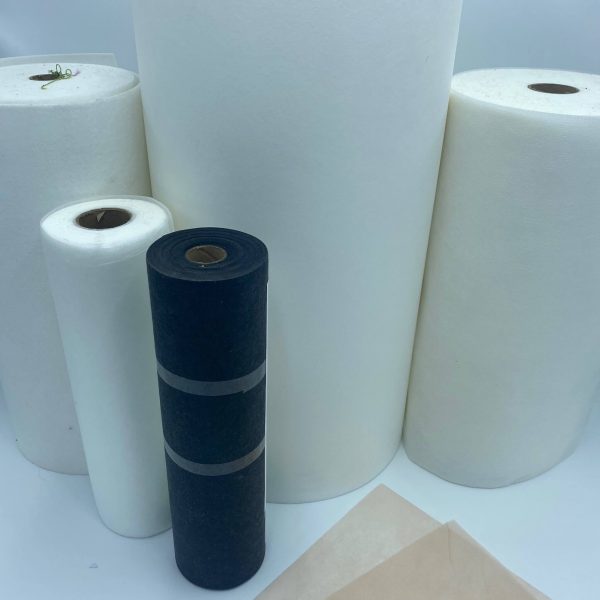
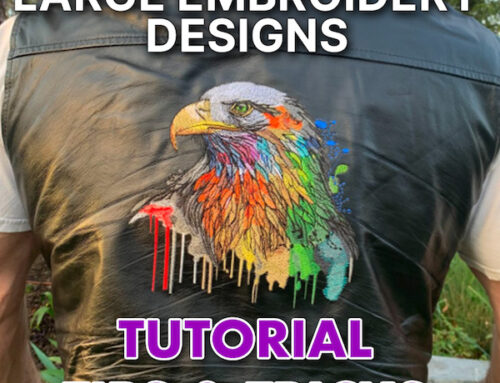
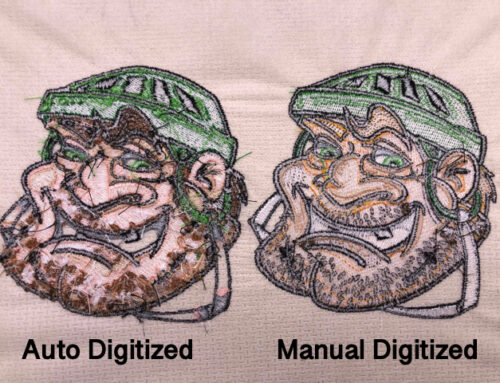


Hi, Can you please tell me the necessary stabilizer, thread and needle sizes, and any other materials to successfully machine embroider a few sentences onto a piece of white woven cotton without the finished product including puckering.? Thank you for your time.
Hi Julie, stabilizer and needle manufacturers generally have product guidelines they suggest for the specific items they offer. Puckering happens depending on many factors, primary ones being the material itself and if it is hooped properly. If your a floater or hoop too tightly both and promote puckering.
Hi John, thank you so much for your advise on all of these topics and the way you explained everything. I’ve learned a lot and won’t make the same mistakes as I already did before. It was really so helpful.
Great to hear Antionette 🙂 thanks for your support